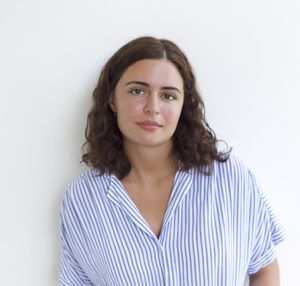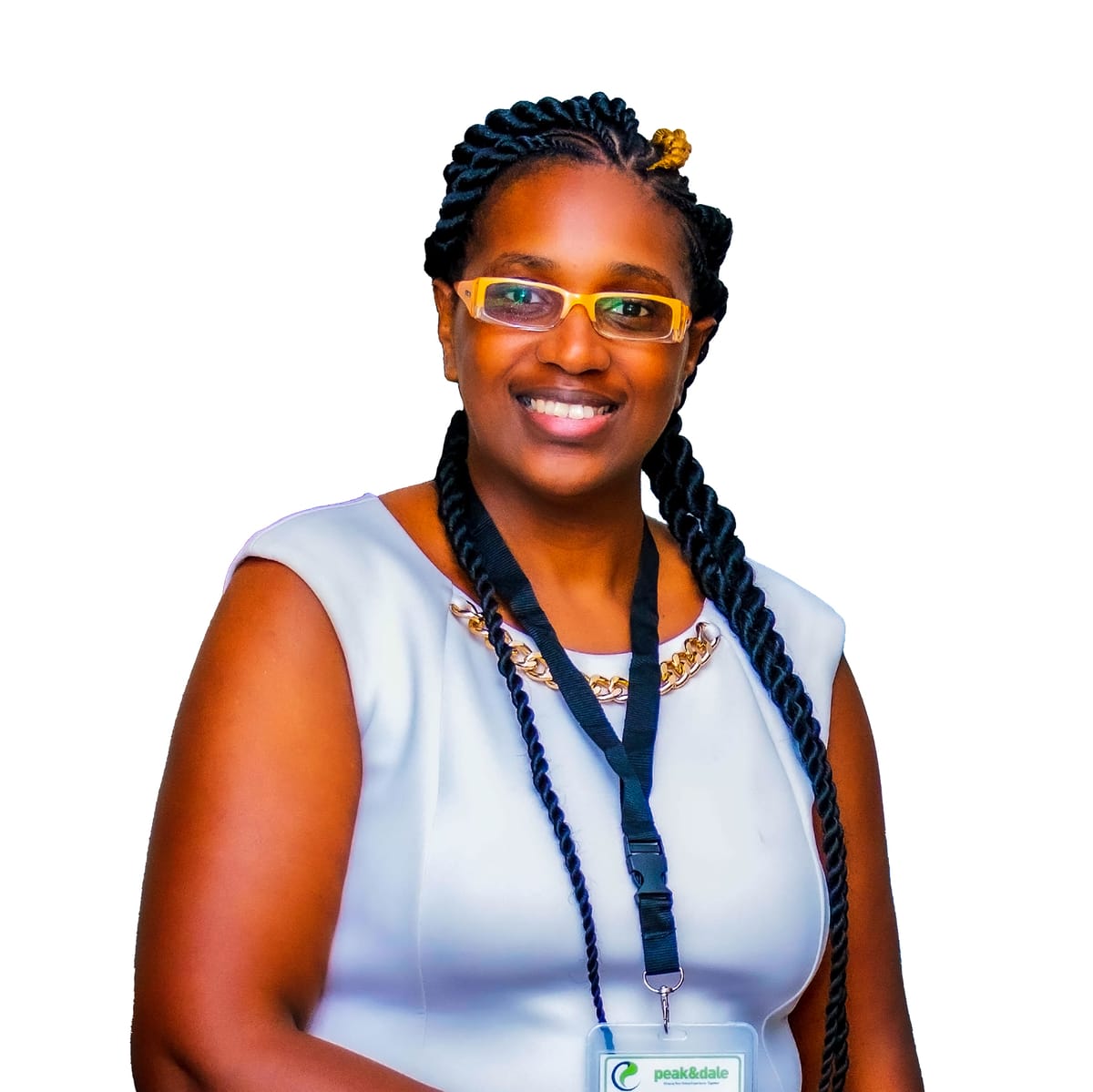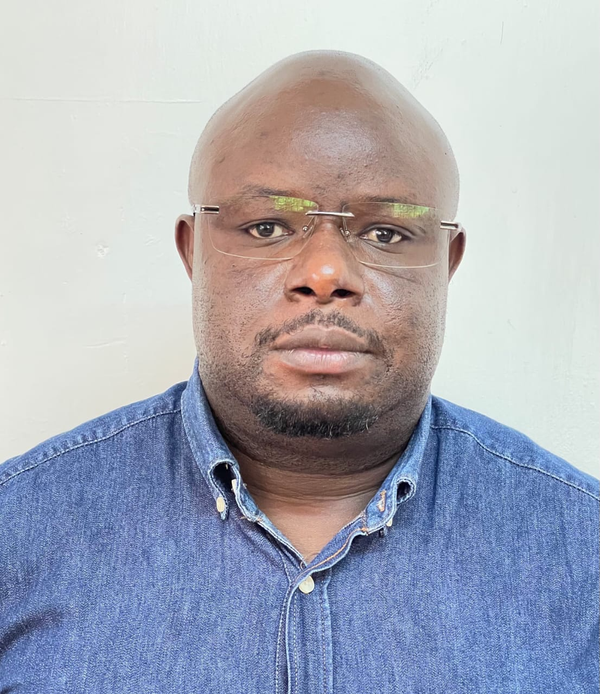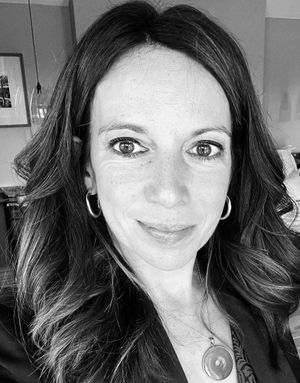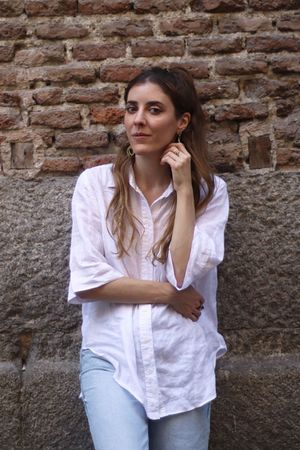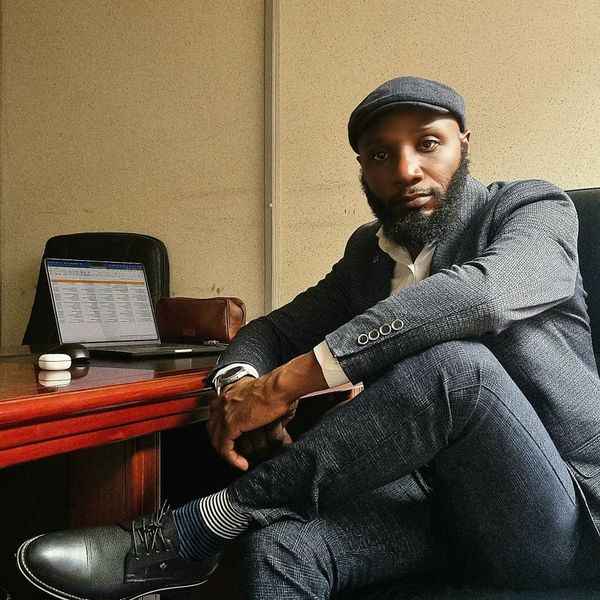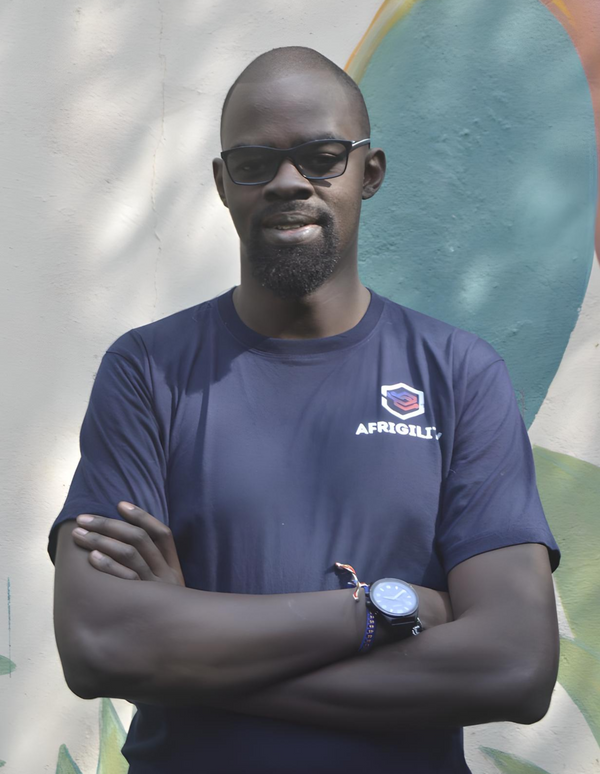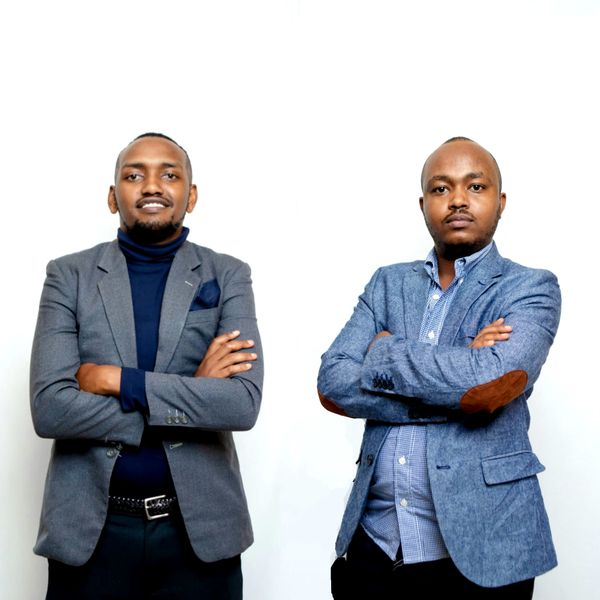Nairobi, Kenya
When the tech industry in Kenya was primarily male-dominated, Brendah Mwirichia navigated boardrooms as the lone female entrepreneur. Getting people, especially men, to see the potential in her ideas was a constant uphill battle. It wasn't just about pitching her business ideas — she had to prove she deserved the chance to do so in the first place.
"First, it was really disheartening," she recalls. "But I think the will to go forward, a lot of perseverance and determination helped me get through it."
Brendah's sense of resilience became the foundation for Peak & Dale Solutions — the innovative tech, marketing, and communications agency she founded, where her team excels in crafting digital solutions and empowering African businesses to grow. The company specializes in digital marketing, social media management, website design, and hosting, all rooted in a commitment to customer satisfaction. Over the past 12 years, Peak and Dale's team has played a role in many business success stories, earning industry recognition.
Peak and Dale's journey in the Kenyan tech market was shaped by Brendah's vision as a leader and her strategic decision to join the Stanford Seed Transformation Program.
Learning to take a step back
The 10-month Stanford Seed Transformation Program offers entrepreneurs and busy founders like Brendah a transformative opportunity to grow and scale their established businesses in Africa and South Asia. It equips participants with the knowledge and tools to infuse Silicon Valley innovation and entrepreneurship into their companies.
"A lot of the times you're so busy, you're trying to just get things going. But this time, I had to sit down and think: okay, so what will this [her company] really look like in the next couple of years? So, the Seed Program was really powerful in that way. You step back and look at it from that perspective. Focus on the business as opposed to working in the business," Brendah recalls.
The take-a-step-back approach involves shifting your attention from the day-to-day operational tasks and details of running a business ("working in the business") to a more strategic and big-picture perspective where you concentrate on the overall direction, growth, and long-term goals of the business itself ("working on the business").
"And when you take a step back, I think you see things from a very high-level perspective, which is so important because now the business has really grown. We are closing this year at 130% of what we did last year," Brendah explained. "So that's tremendous growth, and the fact that I'm able to actually utilize my teams to be able to achieve that is definitely an advantage."
At the Stanford Seed Program, participants engage in face-to-face classes, workshops, and remote sessions focusing on strategic skills, methodologies, and mindsets required for business growth. At the end of the program, they have to develop a three-year transformation plan. For Brendah, this meant she had to look at various parts of her business structure, what was working and what was not, including finance and HR.
Fortunately, she didn't do it alone. Brendah had the opportunity to include her upper management, who completed the Stanford Seed Program with her — something she recalls as one of the main highlights of her time in the program.
"Everyone was able to see my vision, I think, from a clearer perspective, but they were also able to own it. It's amazing now when I'm sitting down with my team, and we're talking about concepts, and someone brings up a concept that we learned at Seed," she said.
"The other day, I was in a meeting room with some of my team, and we were having a brainstorming session, and then one of them brought up the PARC model, and I'm like, okay, this is amazing. We discussed it and applied it to what we were working on."
Stanford University Professor Emeritus John Roberts developed the PARC framework Brendah refers to. It focuses on three key elements: People, Architecture and Routines, and Culture. These elements are integral to determining how a company works and checking if its goals match its overall strategy.
"The tools and framework learned and acquired during Seed have helped me to structure the business in all departments, to pay more attention to finance, and to allow my management team to truly embrace the vision and lead," Brendah explained. She applied the PARC framework to measure Peak and Dale's performance and made some changes, starting with her people.
A people-focused approach
Brendah used to be a leader involved in everything, dangerously close to the point of micromanaging every task. It wasn't just about control; it was more about constant presence. She was passionate about knowing every little detail and being present in every part of her business. But for Brendah, this approach translated to less time to consider the company's strategic goals. For her team, it meant less ownership and responsibility.
Her previous leadership style was rooted partly in Brendah's fear of making mistakes that might impact her company's success and reputation. But after talking with experts and like-minded professionals at the Stanford Seed Program, she realized that giving her team more freedom to lead in their respective areas could be a better approach for Peak and Dale. It would foster innovation, empower team members, and enhance morale while giving Brendah time to focus on strategic thinking.
It took a process of self-discovery and inner reflection for Brendah to recognize the profound importance of allowing her team to stumble and make mistakes, understanding that these were stepping stones to growth and progress. When it comes to business development, for example, she trusts the head of the department to take ownership of their role. Similarly, for anything creative, she relies on her creative director to take charge. This shift means she doesn't have to be there daily; she shows up where and when needed.
"If someone makes a mistake, fine. We can pick up the pieces and actually move on," she says.
While developing as a leader, she also found it hard to get her team to work more independently. Instead, they felt the need to validate everything with Brendah before taking any action. Ultimately, she shifted her focus to a communication strategy that instilled confidence in her team.
"This helped them [the team] want to be more thorough before decision-making and therefore own up to the decisions. Recently, my team engaged with one of Kenya's oldest insurance companies and was able to take them through the funnel process and close the deal without my involvement whatsoever," said Brendah.
Managing Gen Z
One of the core components of the Stanford Seed Program is peer groups, known as Leadership Labs, where participants exchange ideas and experiences.
Reflecting on her experience there, Brendah said, "I feel like you got out as much as you put in. All of us had a challenge that we shared and the rest of the team would then try and help to come up with solutions to that particular challenge. And I feel the real value was actually in the listening, because the more you listened, the more you were able to pick up stuff, and the more you offered advice, the more you also learned, at least for me. You're just listening to someone and you get an 'aha' moment."
The "aha" moment for Brendah came when she heard advice about the challenge she'd been dealing with at Peak and Dale for a while: what motivates the Gen Z workforce?
Brendah initially wanted things done in a specific way, expecting her team to conform. However, she realized younger employees had a more unconventional and creative approach that didn't fit traditional molds. She struggled to understand their underlying motivations but saw doing so necessary to retain Gen Z talent.
While Brendah struggled with the managerial challenges of working with younger generations, someone at the Seed Program leadership lab shared relevant experience. Though the entrepreneur shared standard advice ("make everyone within the organization feel valued and appreciated"), the timing was right, and the message resonated strongly with Brendah.
Today, more than half of the team at Peak and Dale are Gen Z. Honest communication, an open door policy, and a culture of continuous learning are some steps Brendah has taken to keep them motivated, together with a more personalized approach. She now assigns projects based on talent, skills, and passion — one component that drives younger generations, including Gen Z and millennials.
"I remember that everyone is an individual and I can't just put everyone together and tell them, this is what I expect. I have to find the best out of each and every one of them," she says.
Brendah leaves room for autonomy in her team's "passion projects," so they have some degree of control over how they approach and execute their assigned tasks. She's confident this approach empowers Gen Z employees to make decisions, solve problems, and take ownership of their projects from start to finish.
A different structure
In the past, Peak and Dale used a conventional top-down model, where each department operated under the guidance of its leader. That resulted in a rigid, vertically oriented hierarchy.
However, after Brendah's experience in the Stanford Seed Program, she reshaped Peak and Dale into a matrix organization, seamlessly blending elements of both top-down and horizontal approaches. One leader oversees the entire organization, while account managers guide smaller teams. Brendah says this approach has brought a harmonious and collaborative atmosphere that benefits the entire company.
"The structure now makes sense. Everything came together," she says.
"Communication has really become much easier and linear and more frequent, which is very important for our kind of business. Why? Because all these smaller cohorts should be able to effectively communicate. This is a scalable structure that will work regardless of how big the organization grows."
Brendah understands that a sustainable business model involves more than just rapid growth. It entails making strategic decisions that ensure her company's continued viability, relevance, and adaptability in a rapidly changing tech market. Her commitment to sustainability means she is not merely focused on short-term gains but is dedicated to maintaining a balanced and resilient business structure that can foster innovation and deliver value to clients and stakeholders for years to come.
"Innovation is one of our core values. I encourage creativity and risk-taking. The team collaborates and critiques each other's work and learns from it. We have showcase days for work done by the team. I also employ the fail fast technique," Brendah explained, noting it allows her to identify failures and iterate to find solutions quickly.
Deep and thorough engagement with clients to better understand their needs, preferences, and challenges is also part of the plan for Brendah and her team. "We become an integral part of your marketing because we deeply immerse in your brand and are able to offer value," she adds.
Brendah's team thoroughly understands their clients' brands, marketing, and communication strategies. They manage the marketing process — taking ownership of digital assets and social media — to ensure their clients connect effectively with their target audience. As a result, Peak and Dale boasts 400 projects and over 300 happy clients.
Stick to the culture
In the context of the Seed Program, the Leadership Lab isn't the sole platform for exchanging ideas. Stanford business advisors also provide guidance, mentorship, and expertise to individuals or teams seeking to apply new tools and frameworks to their own businesses.
For Brendah, her experience in Stanford's program led to the realization that fostering a sense of value and appreciation should be the centerpiece of Peak and Dale's culture. In fact, that's what the Stanford business advisor told her: stick to your culture and make sure the organization's identity is intact amidst growth and change.
"Our mascot is a squirrel. It's fun, it's eclectic, it's a bit cheeky, but very, very tenacious and very friendly. We value integrity, we value excellence, we value teamwork," she says, smiling.
Brendah ensures she exemplifies her company's values so the team adheres to them. Company values are a frequent topic of discussion within the organization so that everyone on the team has a deep understanding of them. Following these discussions, the focus shifts to how their values are actively integrated into the company's day-to-day operations.
"It's funny how when you keep talking about them, they become second nature and everyone wants to play their part to live it," she says. "These are things that every new hire has to have. We want them to fit into the organization."
Making the wrong hire was one of Brendah's fears in the early days of her entrepreneurial journey, so she established a rigorous hiring process with task assignments and interviews with her top leaders. This assignment focuses on how potential candidates think, write, and communicate.
"My protocol is hire slowly, fire quickly. Where something doesn't work, I let go. I have learned from experience that when someone is not fitting in and is not trying despite the efforts the company puts in to help them succeed, then it is important not to delay the pain," Brendah suggests.
Looking ahead
If Brendah had to reflect on the entire experience at the Stanford Seed Program, she would single out the most valuable takeaway: take an objective look at your business.
"The reason it's so powerful is because, as entrepreneurs, you're trying to get things moving, and you get stuck in this sort of cycle. And so, what Seed does is it helps you get out of that."
In other words, the cycle Brendah refers to is the chain of routine tasks (such as team oversight) that entrepreneurs follow daily, convinced they're propelling their businesses forward. For her, getting out of the cycle led to a transformation from a "micromanager leader" to a visionary focused on her company's goals and aspirations.
Now that Brendah has changed her leadership habits, she wants to explore opportunities to acquire smaller businesses, particularly those in similar or competing fields. This is a vital part of their growth strategy, aiming to integrate acquired businesses into their operations effectively. It would allow them to serve competing businesses better and overcome limitations in working with competitors due to existing partnerships. Through strategic acquisitions, they can serve various companies in the same industry.
"Because I'm an agency, if I get a large insurance company, then it's very hard to get another large insurance company to work with, because you're already working with the first one, and we see it as competition," she explained. "But if I have two agencies, then I can get competing businesses, and service them in the different companies."
The same kind of dedication helped her navigate the challenging terrain of the male-dominated world of entrepreneurship in Kenya, where she faced numerous obstacles but never wavered in her determination. Brendah's resilience and unyielding spirit propelled her forward in that landscape, proving she could not give up easily.
Brendah's advice for aspiring women entrepreneurs in Kenya is simple yet powerful: "I would tell them to hang in there, to go for it. To have a lot of determination and perseverance. And to just be themselves."
